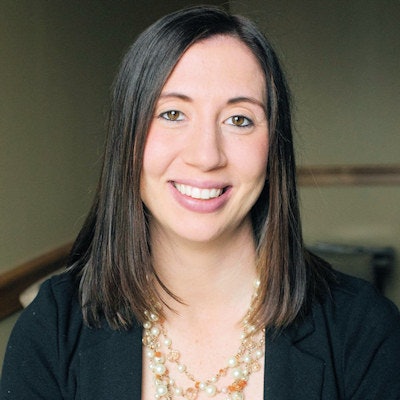
"Can I just be billed?" How often do we get that question from a dental patient? Every time it's asked, it hits you like a wall of bricks, doesn't it?
Let's make that question one of the past as we set up the right payment expectations for our patients before we ever collect a penny. Here are the key interactions to let the patient know that payment is always due at time of service.
As you go over the treatment plan
 Ashley Bond is the founder of Bond Dental Consultants.
Ashley Bond is the founder of Bond Dental Consultants.Before a patient ever gets treatment completed, he or she should be presented with a treatment plan, and this includes your same-day emergency patients. This is the prime time to let the patient know that payment is due at time of service.
But how do you slip that in? Let me give you a few examples.
Scenario No. 1: Johnny is checking out after his hygiene appointment. He has a crown that needs to be scheduled ASAP. You present the treatment plan to Johnny and let him know the insurance company's estimated portion, as well as his estimated portion.
"Johnny, for the crown on tooth #2, we are estimating insurance to cover $550 and your estimated portion is $550, which is due when you come in. My next available appointment is ______ or ______. Which works best for you?"
Don't miss a beat, and just let the patient know that this portion is due when he or she comes in, and don't forget to mention it is always an estimation.
Scenario No. 2: Mary comes in for an emergency exam for pain on her lower right side. The dentist sees that the tooth is unsavable and that Mary needs an extraction. Mary is ready to move forward today to get out of pain as soon as possible. The dentist is preparing to numb the patient to get things moving along before his next patient, but you realize you haven't gone over a treatment plan with the patient.
You run to the back and give the dentist the signal you need to talk about finances. He pulls off his gloves and sits the patient up, as you sigh with relief. There have been too many times the patient was not prepared to pay the same day and, unfortunately, you were unable to ever collect those accounts easily. You go over the patient's estimated portion that will be due today and give her the option to pay now while she is in the chair. Crisis averted!
As you collect the patient's balance
The patient has completed treatment, and it is time to collect the estimated portion due. This is a key time to mention a few important items.
First, always tell the patient, "We are estimating your portion to be $ ______. How would you like to take care of that today?"
There should be no pauses or hesitations on your end.
Second, as you are submitting the patient's payment and handing him or her the receipt, this is the perfect time to say, "If there is any difference in your portion due after we receive insurance back, then we will send you a statement in the mail."
This is a great way to disarm the patient ahead of time in case he or she does receive another statement in the mail. If patients question why they would ever have to pay more, it is a great time to teach them that insurance is always an estimation and we can never guarantee payment. However, we always fight for the greatest reimbursement for our patients. This takes the pressure off you and puts it on the insurance.
Some patients may still push the boundaries to see how far they can go with delaying their payment. This is why it is important to have solid systems in place, sprinkled with great customer service. This allows patients to be aware ahead of time of expectations regarding payment.
For more scripts on how to respond to patients' objections to paying, email me at [email protected] and I will send you those resources for free. These two interactions with patients can make or break your aging report and finally give your office peace when the dreaded "Can I just be billed?" question is asked.
Ashley Bond is the founder of Bond Dental Consultants, a company that specializes in helping practices collect 100% of what is rightfully theirs. She has more than 10 years of experience in the dental field beginning at her father's dental practice, where she saw the ins and outs of everything the business entails.
The comments and observations expressed herein do not necessarily reflect the opinions of DrBicuspid.com, nor should they be construed as an endorsement or admonishment of any particular idea, vendor, or organization.


















